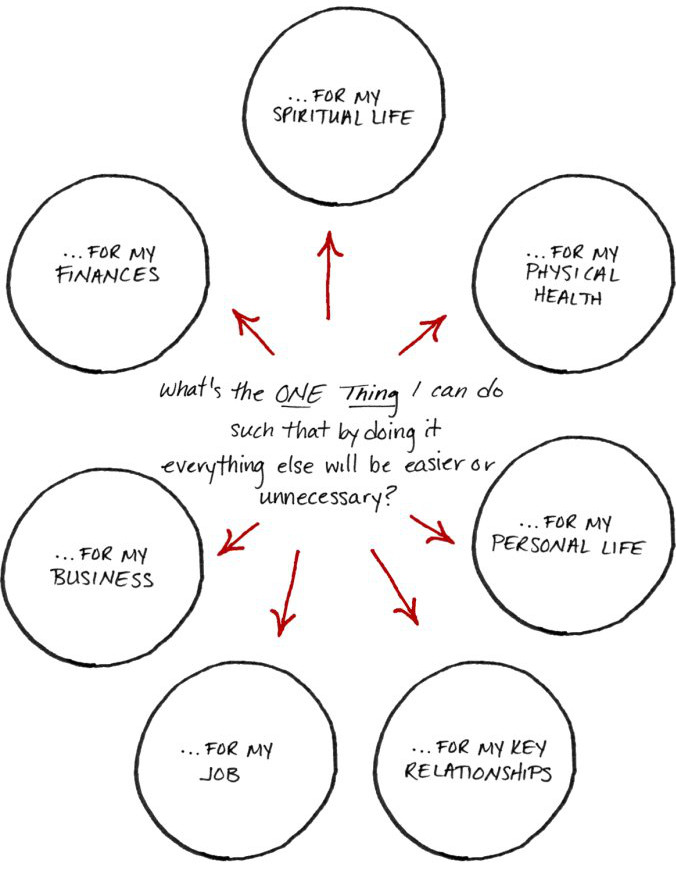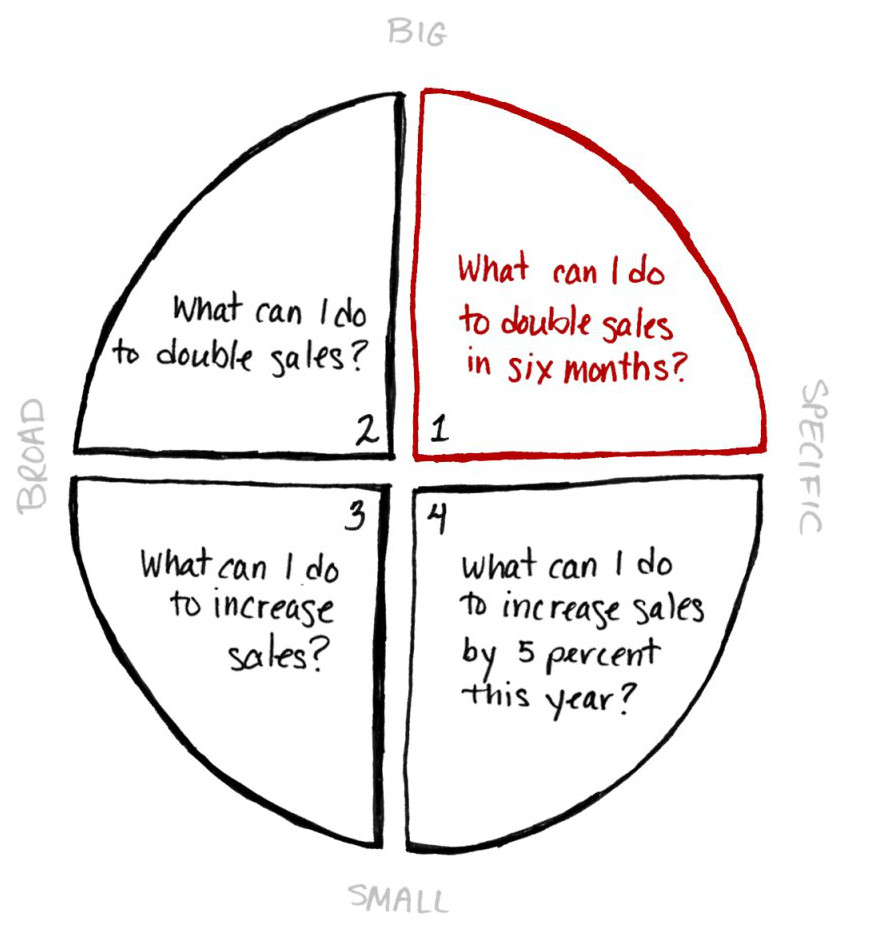The ONE Thing: G. Keller & J. Papasan - Summary & Analysis (2/3)
In this instalment of The ONE Thing Summary & Analysis, discover The Focusing Question and learn about how to arrive at great answers, by asking great questions.
Part Two. The Simple Path to Productivity.
We overthink, overplan, and overanalyse our careers, our businesses, and our lives; long hours are neither virtuous nor healthy; and we usually succeed in spite of most of what we do, not because of it.
If you can honestly say, “This is where I’m meant to be right now, doing exactly what I’m doing,” then all the amazing possibilities for your life become possible.
Chapter 10. The Focusing Question.
The secret of getting ahead is getting started. The secret to getting started is breaking your complex overwhelming tasks into small manageable tasks and then starting on the first one. Answers come from questions, and the quality of any answer is directly determined by the quality of the question. Ask the wrong question, get the wrong answer. Ask the right question, get the right answer. Ask the most powerful question possible, and the answer can be life altering.
The Focusing Question is both a map for the big picture and a compass for your smallest next move...
The Focusing Question always aims you at the absolute best of both by forcing you to do what is essential to success — make a decision. But not just any decision — it drives you to make the best decision. It ignores what is doable and drills down to what is necessary, to what matters.
It leads you to the first domino.
Anatomy of the Question. The Focusing Question collapses all possible questions into one: “What’s the ONE Thing I can do / such that by doing it / everything else will be easier or unnecessary?
1. “WHAT’S THE ONE THING I CAN DO...
This sparks focused action. “What’s the ONE Thing” tells you the answer will be one thing versus many. It forces you toward something specific. You allow the selection of one thing and one thing only
The last phrase, “can do,” is an embedded command directing you to take action that is possible — it beats intention (should, could or would) every time.
2. “…SUCH THAT BY DOING IT...
Lets you know you’re going to have to dig deep, because when you do this ONE Thing, something else is going to happen.
3. “…EVERYTHING ELSE WILL BE EASIER OR UNNECESSARY?”
The ultimate leverage — this helps you uncover the first domino.
The Focusing Question asks you to find the first domino and focus on it exclusively until you knock it over. Once you’ve done that, you’ll discover a line of dominoes behind it either ready to fall or already fallen.
Chapter 11. The Success Habit.
The choice we face is whether or not we want to form habits that get us what we want from life. If we do, then the Focusing Question is the most powerful success habit we can have.
What’s the ONE Thing I can do such that by doing it everything else will be easier or unnecessary? And when I know the answer, I continue to ask it until I can see the connections and all my dominoes are lined up.
Chapter 12. The Path to Great Answers.
“People do not decide their futures, they decide their habits and their habits decide their futures”
Let’s take increasing sales as a way to break down each of the quadrants, using “What can I do to double sales in six months?” as a placeholder for Big & Specific. Now, let’s examine the pros and cons of each question quadrant, ending with where you want to be — Big & Specific.
Quadrant 4. Small & Specific: “What can I do to increase sales by 5 percent this year?"
This is an incremental gain at best — it doesn’t require any extraordinary action.
Quadrant 3. Small & Broad: “What can I do to increase sales?"
This is a good trigger for brainstorming..adequate for listing options but not much else.
Quadrant 2. Big & Broad: “What can I do to double sales?”
It’s a good start, but the lack of specifics leaves more questions than answers.
Quadrant 1. Big & Specific: “What can I do to double sales in six months?”
Now you have all the elements of a Great Question. It’s a big goal and it’s specific!
A big, specific question > a big, specific answer.
Find a Great Answer.
Highly successful people choose to live at the outer limits of achievement. They not only dream of but deeply crave what is beyond their natural grasp. They know this type of answer is the hardest to come by but also know that just by extending themselves to find it, they expand and enrich their life for the better.
Anytime you don’t know the answer, your answer is to go find your answer. In other words, by default, your first ONE Thing is to search for clues and role models to point you in the right direction.








